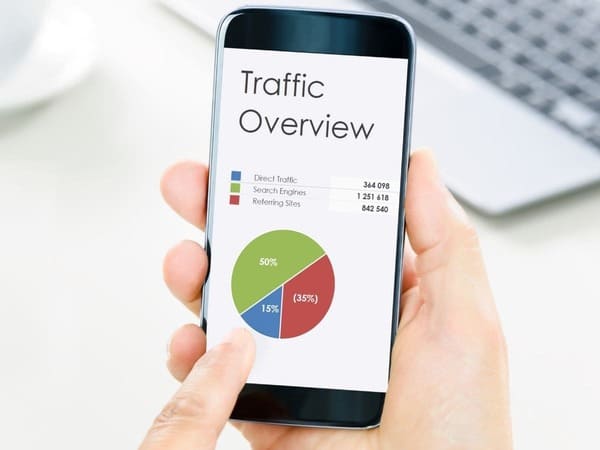It has been said that “marketing is everything.” This quote has stood the test of time and refers to what marketing is today. Slogans and campaigns are being used to make people know about a company, brand, or product. Marketers use these phrases to relay a message to the consumers about their brand.
Did you know that 89% of all consumer purchases are based on recommendations from people they know? The reason I’m asking is that there’s a huge opportunity right in front of you and your business to capture this sales potential. In fact, for every 50 rupees spent on digital advertising, an estimated 1000rs is spent on word-of-mouth. That’s a lot of opportunities!
Nowadays, marketing is all about the customer. Whether through content or social media, the customer has the power to decide your fate.

These are some of the most important marketing trends to keep in mind for 2022:
1. Value defined by customers
In a hyper-connected world, customers are pickier than ever. It’s a challenge to deliver what they want in a way that also aligns with your value proposition and marketing goals. It’s time for a change. You need to serve customers in new ways that make the most of this particular connection you have— to the power of reaching out directly to them, wherever they are.
2. Customer experience as a product
The modern marketing landscape is where the customer’s experience is no longer just a feature of the product, and it is the product. Customer experiences are critical to long-term success, and we must understand the important role of emotion in building and retaining loyal customers. To do this, marketers must create meaningful experiences with each touchpoint that the customer has with your brand. The foundation of every experience is built upon emotion. The emotional journey is the most important part of any experience, and it starts with attention. How do you capture someone’s attention? How do you keep their interest? What strategies can you use to make them fall in love with your brand? Attention + Interest = Love
3. Personalization
Personalized marketing is one of the most effective ways to attract new customers. By tailoring your messages to the recipient, you are more likely to make a sale. But sometimes, creating a personalized message for every customer is impossible. If you are constrained by time or resources, it may be tempting to scrap personalization in favor of sending blanket emails. Wondering how to do this? You can market effectively with technology that is available at an affordable price.
The era of mass marketing has come to an end, and in its place, we now have a world where businesses must be responsive to the needs of their customers or risk losing them to competitors. This customer-centric focus opens up opportunities for companies to deliver relevant content and offers to potential customers – options that many businesses are not taking advantage of.
4. Sustainability as a marketing value
Sustainability is the new marketing. Not only does it present an opportunity for brands to differentiate their products, but it also makes a positive contribution to the world. A brand’s sustainability is increasingly vital for consumers as they seek out products and services that align with their values. It’s one thing for a consumer to purchase a product because it’s the ‘best’ product on the market; it’s another thing entirely when they can buy a product with the knowledge that they’re contributing to a better future, even if it costs more.
Sustainability is now a central marketing value, where brands can build or destroy trust in almost any industry. That’s why many companies are now incorporating sustainability into their core business strategy and why so many others are scrambling to catch up.
5. Metrics-based marketing
The marketing world is changing. The world of paid advertising, search engine optimization, and link building is being replaced with a new breed of marketers who focus on metrics and measurable success. Surprisingly, most businesses and marketers don’t know what they’re doing. Most companies have no idea how much money they’re spending on marketing or if it’s even making them any money. This is why the world has been driven by trial and error for many years now. Some marketers are getting more competent than others, making a big difference in their performance. It’s time to start seeing marketing metrics as the basis for your marketing strategy rather than just an addition to your plan.
6. Content is king, not queen
Content is King. Text is Queen. Visuals are the Jack and Joker of content marketing! OK, that may be a slight over-simplification, but you get my point. Content marketing is all about the words, but words are only part of the equation for moving people to take action. The truth is, even at the best of times, people are only going to read about 20% of your content. Visuals are essential if you want them to engage with what you have to say and act upon it. This is where infographics come in: they’re a quick, digestible way of conveying information in a visually exciting way. Infographics have become one of the most popular forms of content marketing because they allow companies to attract massive traffic while researching and publishing more in-depth pieces like blog posts or video tutorials.
7. Marketing as a service
Most of the marketing campaign strategies are driven by data and analytics. They are run by AI and Machine Learning algorithms. Marketing as a service is one such example. The rise of Marketing as a Service MaaS (Marketing as a Service) has happened in the last few years. It is based on the idea that You can use marketing automation software in a cloud-based environment to supply marketers with everything essential to their jobs. This means the marketers have only to pay for the services they need and not for the ones that aren’t necessary. Also, with MaaS, there is no need to invest in hardware, software, or any other infrastructure. The Benefits of Marketing Automation Software Since its existence, Marketing Automation has seen many changes, including the development of new features, which have made it more powerful and easier to use for small businesses and big companies.

The gifts of this software are many: Time-saving; Marketing automation tool helps you save a lot of time by automating various processes that were previously done manually, like lead nurturing campaigns and email marketing. You don’t have to spend hours getting new leads through social media or creating emails manually anymore with these tools. You can easily automate all these tasks with marketing automation.
Marketers must adapt and change their plans to best reach their target audience in the digital age. In this post, we’ve looked at some of the latest trends in marketing your business online and recommended some useful resources so you can get started. By implementing some or all of these strategies yourself, you should be well on your way to seeing results.










